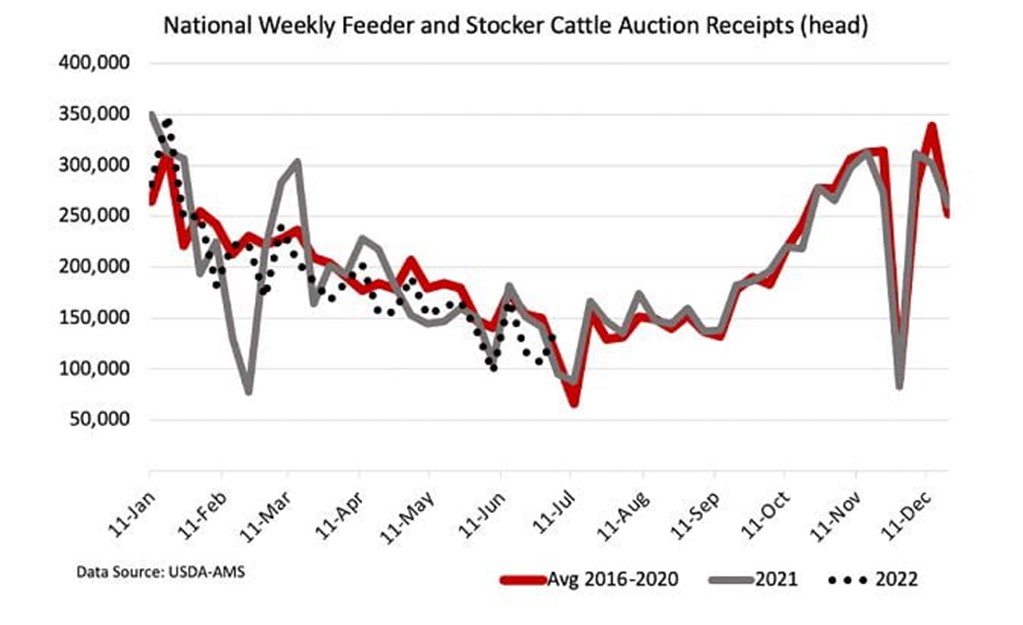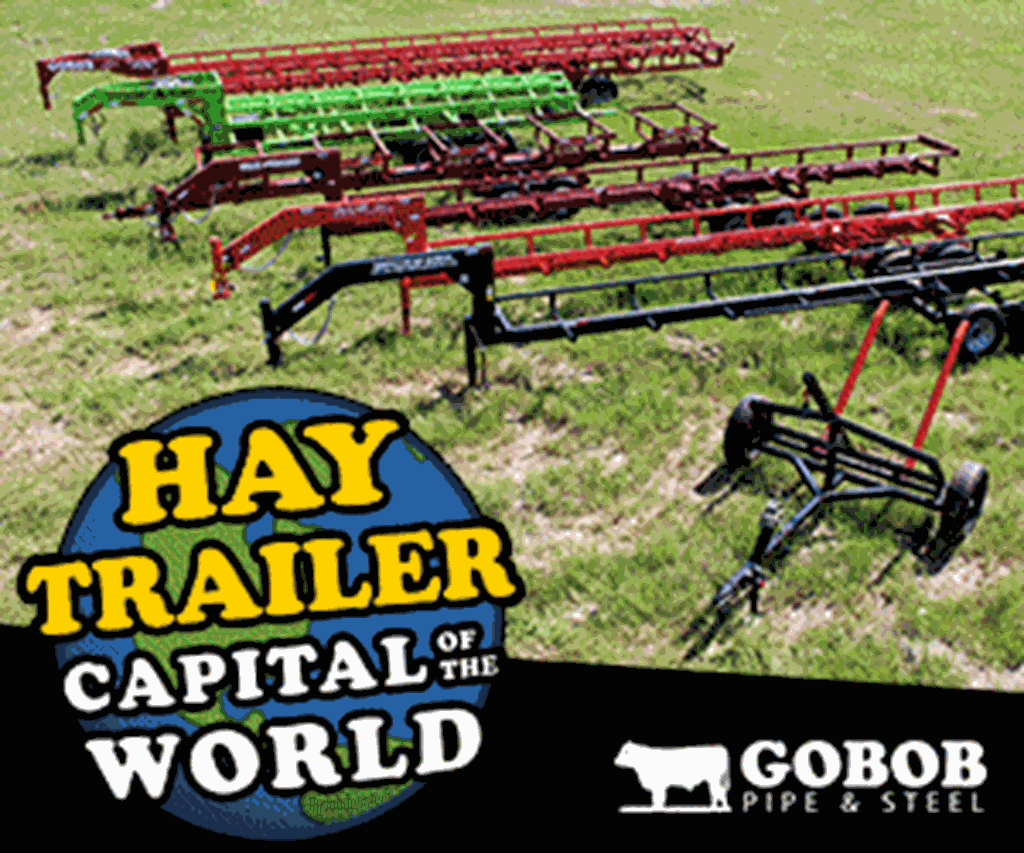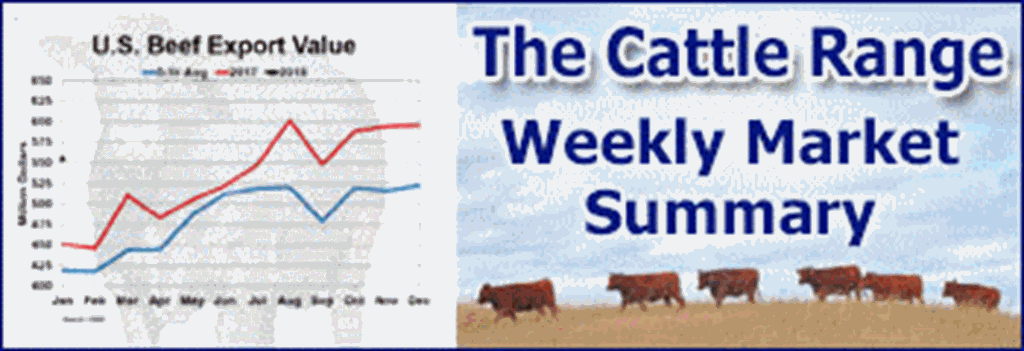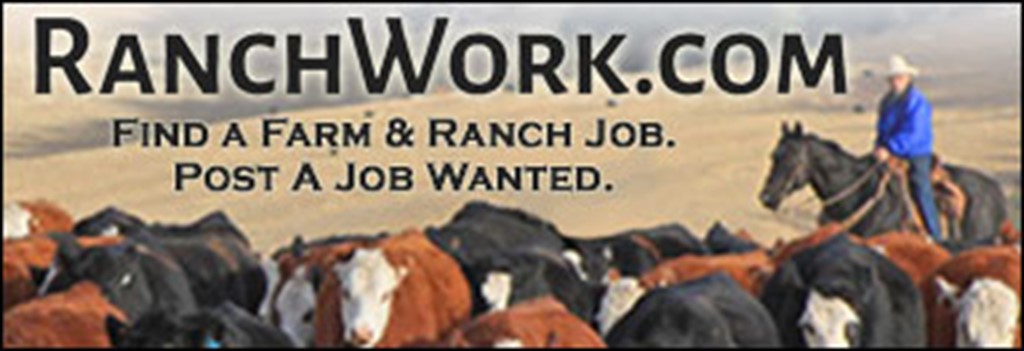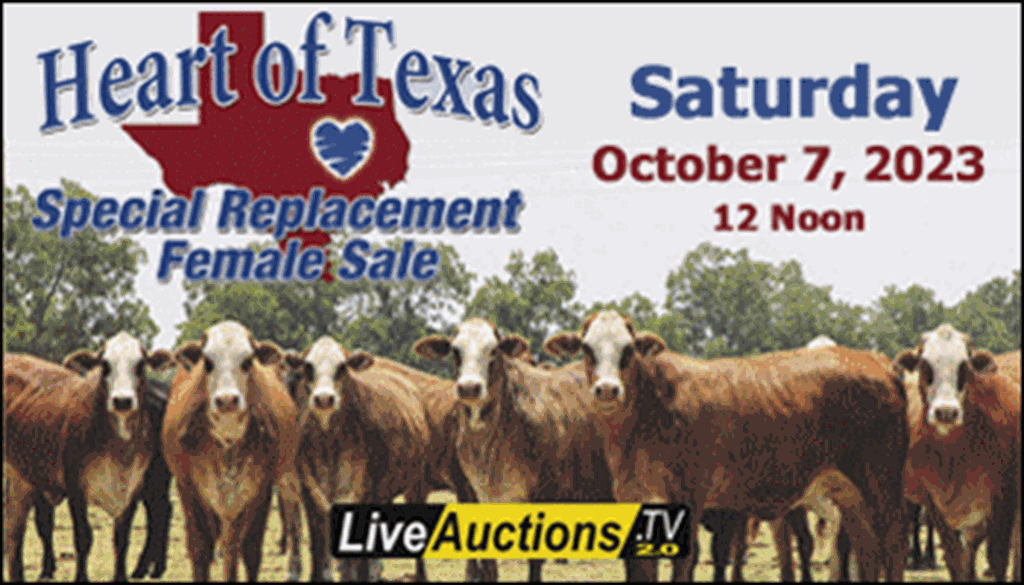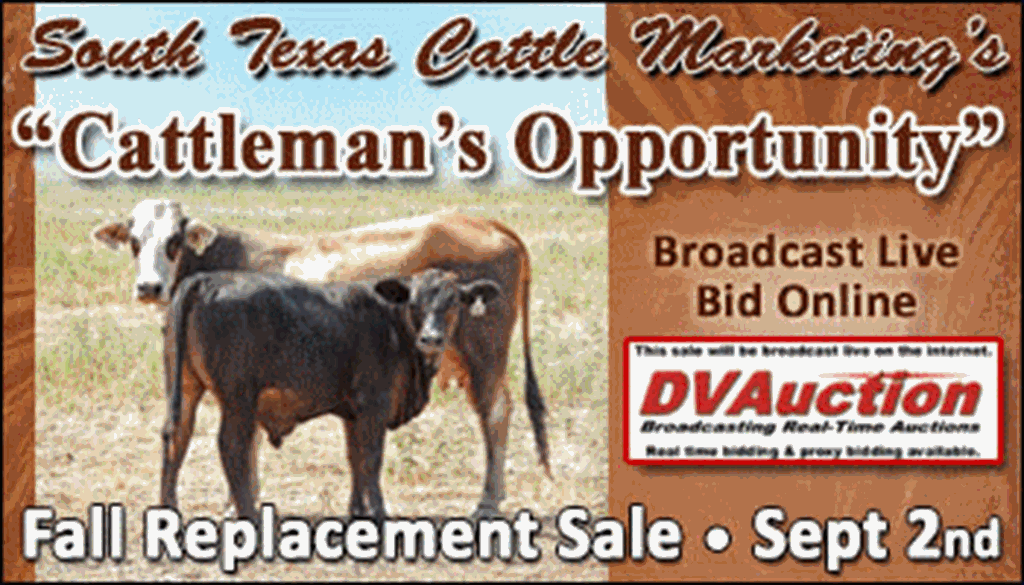Josh Maples, Mississippi State University
The chart above shows the weekly number of feeder and stocker cattle sold at auction so far in 2022 as compared to 2021 and the 5-year average from 2016-2020. Year-to-date, cattle auction receipts are down about 3 percent below the same period for 2021. This chart uses the auction receipts from the USDA-AMS National Feeder and Stocker Cattle Summary.
Auction receipts follow a very seasonal pattern within a year. We are currently in the usual dip that occurs around the July 4th holiday. Auction totals typically begin to build higher from July until the end of the year. Of note is the obvious shock seen on the chart in February 2021 when the major winter storm led to a sharp drop quickly followed by a big jump as more cattle were sold in the weeks following the storm.
While the drop in auction receipts for 2022 is one indicator of tighter supplies, the mix of steers and heifers is also of interest. The chart below shows the heifer percentage of the auction receipts. The percentage of heifers has ticked higher in recent years which is another signal that herd expansion is not occurring. The average weekly heifer percentage is 44 percent so far in 2022. For reference, this average was 39 percent during the first six months of 2015 when the U.S. herd was in a rapid expansion phase and more heifers were being retained for breeding.
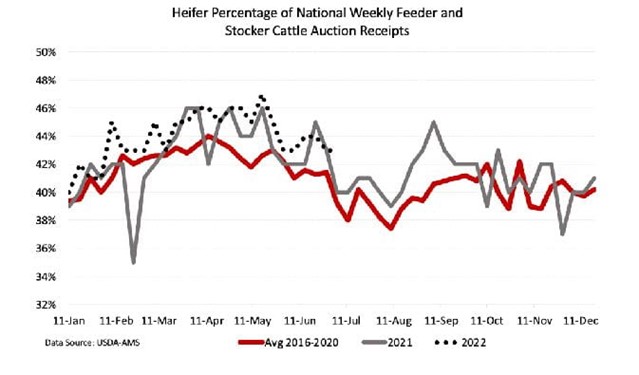
Looking ahead, auction receipts will increase seasonally and markets will react to the larger weekly volumes. However, overall supplies this year are expected to be smaller given the expected decline in number of calves born. The next estimate of the expected calf crop for 2022 will be released on July 22 as part of the mid-year USDA Cattle Inventory report.
